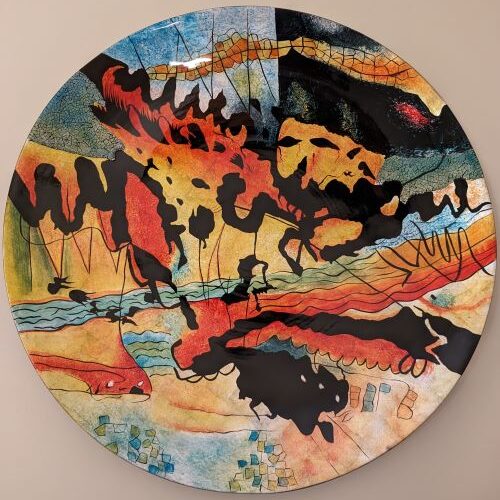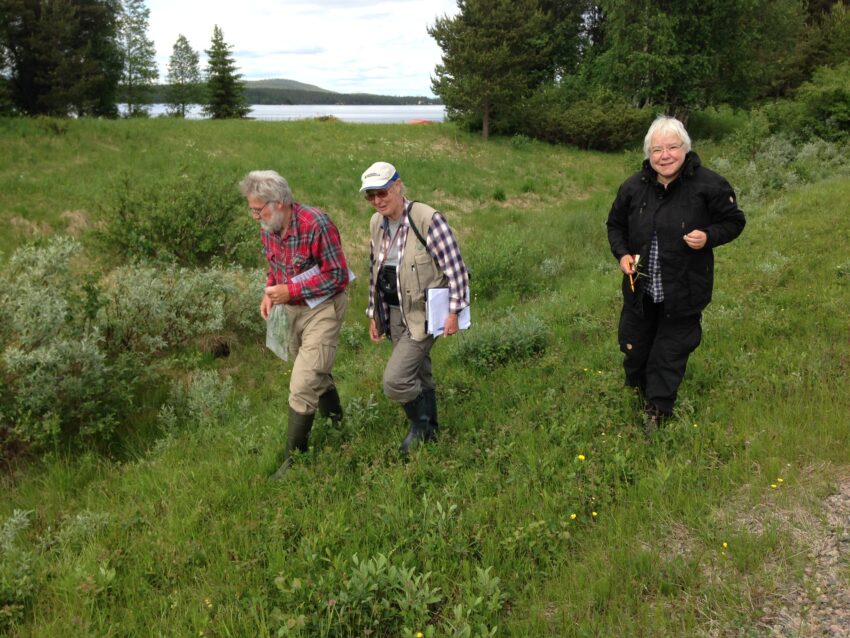I’ve had a crush on Carl since I was a kid. I think my dad told me about him. I wished I could have met him, but he died before I could do that. But in his honor, I followed his trail all the way to Lapland, in the very far north of Sweden, and this is the story of that pilgrimage.
Carl was born fairly close to our farm in southern Sweden where we lived. Carl’s dad was the pastor of a big church west of us. When we did errands in that town, we walked between Carl’s elementary school and his dad’s church.
Everyone had noticed Carl’s unusual mind and passion for nature. At the grade school he was nicknamed “the little botanist”. He worked hard and thought big.
You see, Carl — Carl Linnaeus, that is — was born in 1707. He was to write a botany book that would make him famous, that would become a classic. In other words, he was to become a rockstar of the botany world.
For Carl, science, as we know it, was just getting started. He began in medical school since medicine came from plants. It went well. He moved to a big university north of Stockholm. Then to Holland where he received his doctorate three days after arriving at the university. He had written his thesis on his own before traveling. He was so impressive that the Academy of Sciences paid this 24-year-old to make an expedition to Lapland to study its plants, animals, and minerals. That’s the expedition I followed on my pilgrimage.
Carl loved to lead nature walks. He was so good at it that 100 people might join him. He had assistants, of course. He was a professor, and he picked the very best students to be his “apostles” to spread the word about botany. He also sent them all over the world to collect plants and send them back to him in Sweden for study. Carl was awed by the diversity of the natural word. What bugged him though was the fact that botanists in different countries had different names for the same flowers. So he decided: “God creates, Linnaeus names”. He planned to name every plant and animal in the world so everyone would agree.
To do this he needed a rational system to sort them. His epiphany was “it’s all about SEX”. After all, plants and animals use sex to procreate, and the offspring are similar to the parents; this creates lines of related organisms. He didn’t know about genetics, but he knew what he saw.
Now, back to sex. Carl referred to the stamens of a flower, the doodads where the pollen is, as “husbands”. The pistils, where the pollen lands, were “wives”. They “married” each other. Some thought flowers should be identified by how many petals they had. Here is how Carl replied: “The petals of a flower contribute nothing to generation, serving only as the bridal bed which the great Creator has so gloriously prepared, adorned with such precious bed curtains and come perfumed with so many sweet scents, so that the bridegroom and bride may therein celebrate their nuptials with the greater solemnity”. That’s why he had hundreds of people at his flower walks. He was a science rock star. They called him “The King of the Flowers”.
By the time he was 43 he used his “sexual system” based on counting stamens and pistils to organize 6,000 different plants into a somewhat rational system, named them and published a book to explain how it all worked. He gave each plant two Latin names – the first, more general, the second, specific. For example, he named the dandelion: Taraxacum officianale. It’s Latin, meaning a bitter plant that can be used medicinally.
This book shook the science world. We still use many of the names he created, not only for dandelions, but us: Homo sapiens – beings who think. (Usually)
He was such a rockstar even the king of Sweden noticed. Carl’s birth name was Carolus Linnaeus. The king made him a noble and a knight, and dubbed him ‘Carl von Linne’.
When I first visited my husband’s Swedish farm and “talked botany” with his mother, she showed me the white bust of Linnaeus, his face placed by a window so he could look out over the meadow. When we moved to the farm, I figured I’d be the resident botanist and maybe travel like Carl did. Then a big storm changed my plans and put a Lapland trip on the shelf for more than 10 years.
My friend Suzanne mentioned that she was going to Lapland to count the flowers. What? Yes, she was an amateur botanist, and the national organization was looking for volunteers to meet in Lapland to inventory the plants. There was a central camp where we would meet and lodge.
To inventory the plants they made a map with randomly spaced squares, each about 3 miles on a side. These were in areas that had never been systematically inventoried. The squares were scattered throughout Lapland, then doled out to teams of eager, amateur botanists.
I thought this would be paradise. Get away from the farm and its chores for a week and botanize with like-minded people in the wilderness.
Suzanne and I flew 800 miles north to meet our teammates. We, another woman, and a REAL expert botanist, were one sub-team. We chose our square on the map and learned exactly how we were to do the plant inventory: Latin names, take samples, location, estimate abundance. Our area was 9 square miles to be inventoried mostly on foot. Our expert botanist had a car so we could get as close as possible.
The day arrived: The expert botanist’s books and gear for pressing plant samples were all ready. You have a pack? You have rain gear? You have mosquito repellent, snacks, water? Tall rubber boots for bogs and swamps? Yup Yup Yup, we replied, and off we went.
Remember the Latin name for dandelion? Well, our botanist is the world’s expert in dandelions. Who would have known that there are about 150 different kinds of dandelions that all look pretty much the same. That meant that whenever we saw one, we would pull it up and show it to him; he would write a Latin name down; and then we would press the sample to take back to the camp to check the ID that evening. Luckily, there weren’t that many dandelions; otherwise, I would still be there trying to identify them.
Our botanist was crafty in steering us to many different habitats: scraggly tundra, forests, open bogs, burbling springs, abandoned homesteads, and once to a lake with a sandy beach in the wilderness. There we women asked the botanist to take a hike while we skinny dipped in the clear, cold water to wash off our sweat, chill our mosquito bites, and refresh us. There were so many bugs that I had worn a head net most of the time. Have you ever drunk coffee wearing a head net? Not that easy.
There were many beautiful moments including when we stood in an open bog, quaking ever-so gently, not wanting to move our feet for fear of trampling an orchid or rare carnivorous plant, or delicate flower just an inch tall.
Lapland is a land of magnificent vistas. After his expedition to Lapland, Carl wrote: “Blessed be the Lord for the beauty of summer and spring, for the air, the water, the verdure, and the songs of birds.”
My pilgrimage to Lapland in the footsteps of Carl Linnaeus was one week. One week that stands out vividly from the others in our 15 years in Sweden.
Copyright © 2024 by Ann Sigford


So descriptive! I can imagine myself standing on the edge of that open bog with you.